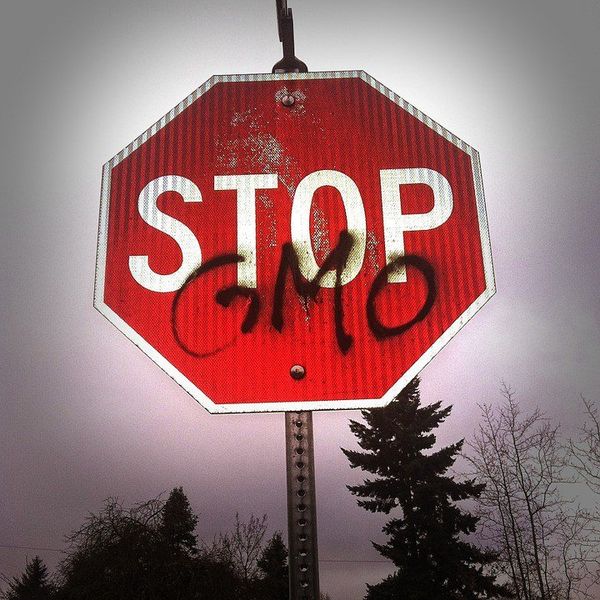Democrats have, since FDR, been fighting to make climate change an issue that attracts voters. These Democrats argue that 98 percent of scientists support the existence of climate change and we need to focus on it because, after all, they are the experts! Yet, it is largely these same Democrats who oppose and even fight against the advancement of Genetically Modified Organisms (commonly called GMOs). These GMOs have been the victim of a propaganda campaign that has massively hurt the public image of the scientific breakthrough. Pew Research reported in 2014 that 57 percent of Americans think it’s unsafe to eat GMOs, even though the FDA checks Genetically Engineered (GE) foodstuffs with the same, or even higher, scrutiny than they give all food they check. It has become commonplace to hear parents say they don’t want their kids eating GMOs (sounding, painfully, like those who oppose vaccines). But the fact is that a massive amount of research has pointed to Genetically Modified Organisms being safe.
The most important thing to understand about GMOs is that they are not one thing. The anti-GMO lobby treats the term GMO as if it is an umbrella term that can fit all GMOs so that it is easier to defame them. It is, in fact, a hasty generalization to say that all GMOs are bad, if there was only one GMO that can be pointed to as bad. In reality, GMOs are many different things created for many different reasons by many different people and in many different places. Some GMOs, currently or in the future, might be created poorly or might have unforeseen repercussions, but up until this point, you'd be hard pressed to find any GMO that has been scientifically and unimpeachably proven to be a harm.
So let's consider a scenario where a supporter of non-GMO foods were to tell you that they heard about a crop of, let's say papaya in Hawaii, that had poorly affected a community and that is why they only eat non-GMO food, especially papaya. The problem with this argument, which is made quite often, is that batch of papaya (assuming they're right and the papaya did have a negative impact) does not necessarily mean that a batch of GE corn in Iowa is bad. They are taking a specific GMO and making all GMOs out to be bad. But they are not.
From papaya in Hawaii, rice in Asia, and corn,
cotton, tobacco, and potatoes in nearly the entire world, GMOs have helped people. GE rice in Asia especially could make an impressive impact on those it was
designed to help. The Swiss Federal Institute of Technology set out to find a
solution to the 250 million children that suffer from vitamin A deficiency, a
large majority of whom will go blind due to the deficiency. They wanted to find
a way to put Vitamin A into rice, which is the staple food of that region, and
they were successful in doing so by genetically crafting a rice that contained the much needed Vitamin A. Greenpeace, however, took offense to this breakthrough. They said it did not have enough Vitamin A in it, even though it presented more options than the previous plan. After many more faulty criticisms were raised, ranging from beta carotene causing birth defects (it doesn't) to the greed of the makers of the GMO (even though it was planned to be given away for free), Greenpeace has continued to stonewall the wide release of Golden Rice. Greenpeace boasted, “After more than 10 years of research ‘Golden’ Rice is nowhere near its promise to address Vitamin A Deficiency.” And a million more kids are dead."
To be clear, I don't think that GMOs have absolutely no potential for harm. I would wholeheartedly support reform in how the field is handled. For starters, companies should not be able to control a monopoly on the best seeds. This kills business and makes it impossible for small farmers to compete. There should also be more regulations on how and who can make GMOs. Some sort of testing process needs to be setup so that GMOs can be proven to be safe before they go into a single human mouth. There is also serious concern about the amount of pesticide that is used and the effect that it has on non-pest bugs (like bees). But none of these concerns have anything to do with genetically engineering foods. Indeed, all of these are more about the system that surrounds the GMOs, which could be changed if our society would stop the fear campaign against GMOs and started looking at the system instead.
The World Health Organization, the American MedicalAssociation, the National Academy of Sciences, and the American Association for the Advancement of Science have all stated, unequivocally, that GMOs are nonthreatening. Nearly every single product on the market in today’s society is created, in some fashion, by genetically modifying one of their components. But companies like Chipotle and Trader Joe's continue their purging of GMO products, and Congress is constantly assaulted with bills demanding more regulation and labeling to hold the progress of GMOs back. While some point to logical problems with the system that currently surrounds GMOs, any argument that rests on GMOs being harmful or dangerous is innately flawed given the evidence available to us today. While the radical left-wing and environmentalist groups will surely continue their crusade against GMOs, it is important that the public tries to sort through the lies and rumors to find the cold hard facts.





















